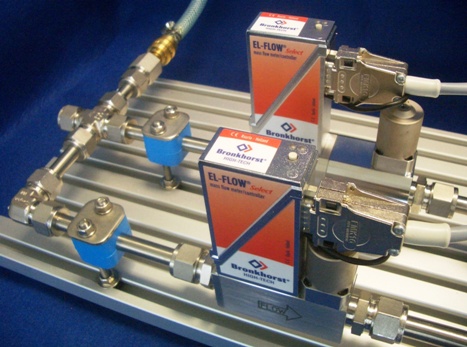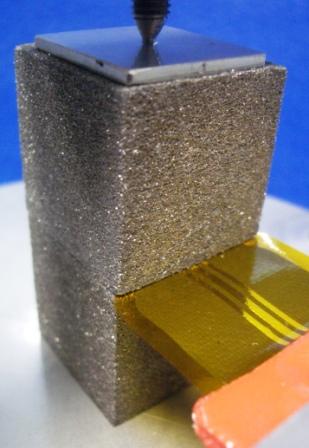

Problem
Cellular materials offer a large number of applications in the field of power engineering. This includes the use in heat exchangers, evaporators, thermal energy storages, thermally insulating devices and filters, respectively. The most important advantage with respect to heat transfer is the possibility of a flow passing the structure in connection with the extremely large inner surface.
Typical representatives of cellular materials are foam, fiber, wire, hollow sphere and honeycomb structures, which can be manufactured either of metals – as done at IFAM Dresden – or of other materials (ceramics, plastics). To design a technical device using such types of cellular structures qualified information about the heat transfer and flow coefficients are needed.
Procedure
Transport coefficients have to be determined from experimental investigations – not only in the case of cellular materials. To ensure an optimal transferability of the measurements defined flow conditions are generated in the laboratory and the measuring results are plotted in a generalised – mostly dimensionless – way. At IFAM Dresden the required experimental equipment as well as the scientific know-how for an optimal data evaluation is available.
The service offer of the thermotechnical laboratory at the Fraunhofer IFAM Dresden includes:
- measurement of the heat conductivity of cellular materials
using the so-called Hot-Disk-method,
- measurement of pressure, temperature, velocity and
volume flow rate in gases and liquids,
- measurement of local and temporal temperature
distributions using high performance thermography,
- generation of defined flows of gases and liquids with
variable parameters for investigations of heat transfer and
flow conditions.
Measuring results can be presented depending on the special requirements as simple graphical plots extended to the use of mathematical, primarily empirical methods. These correlations are at least qualified for calculations of pressure losses and temperature distributions as well as for the implementation into numerical algorithms (boundary conditions, transport coefficients).
More detailed information regarding to the characterisation of cellular materials are summarised in a special data sheet which is provided for download here.
 Fraunhofer Institute for Manufacturing Technology and Advanced Materials IFAM
Fraunhofer Institute for Manufacturing Technology and Advanced Materials IFAM